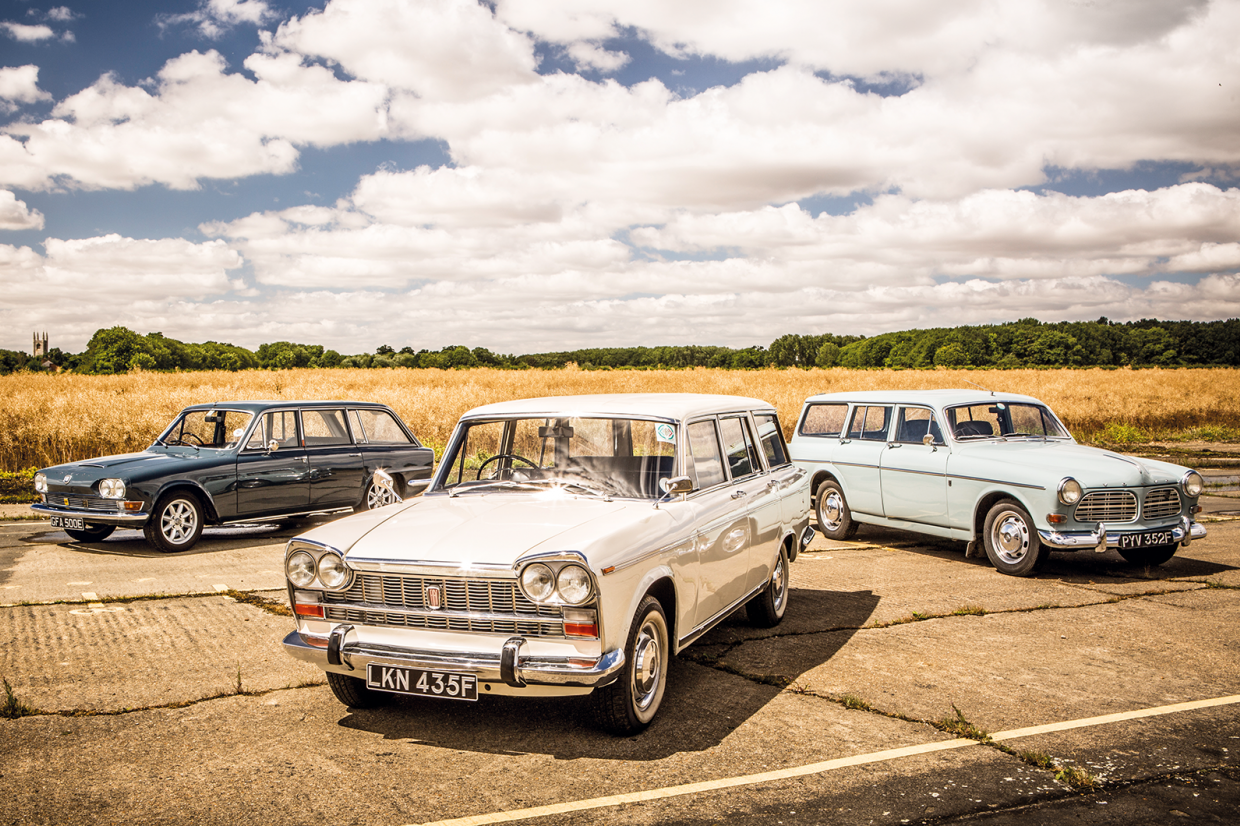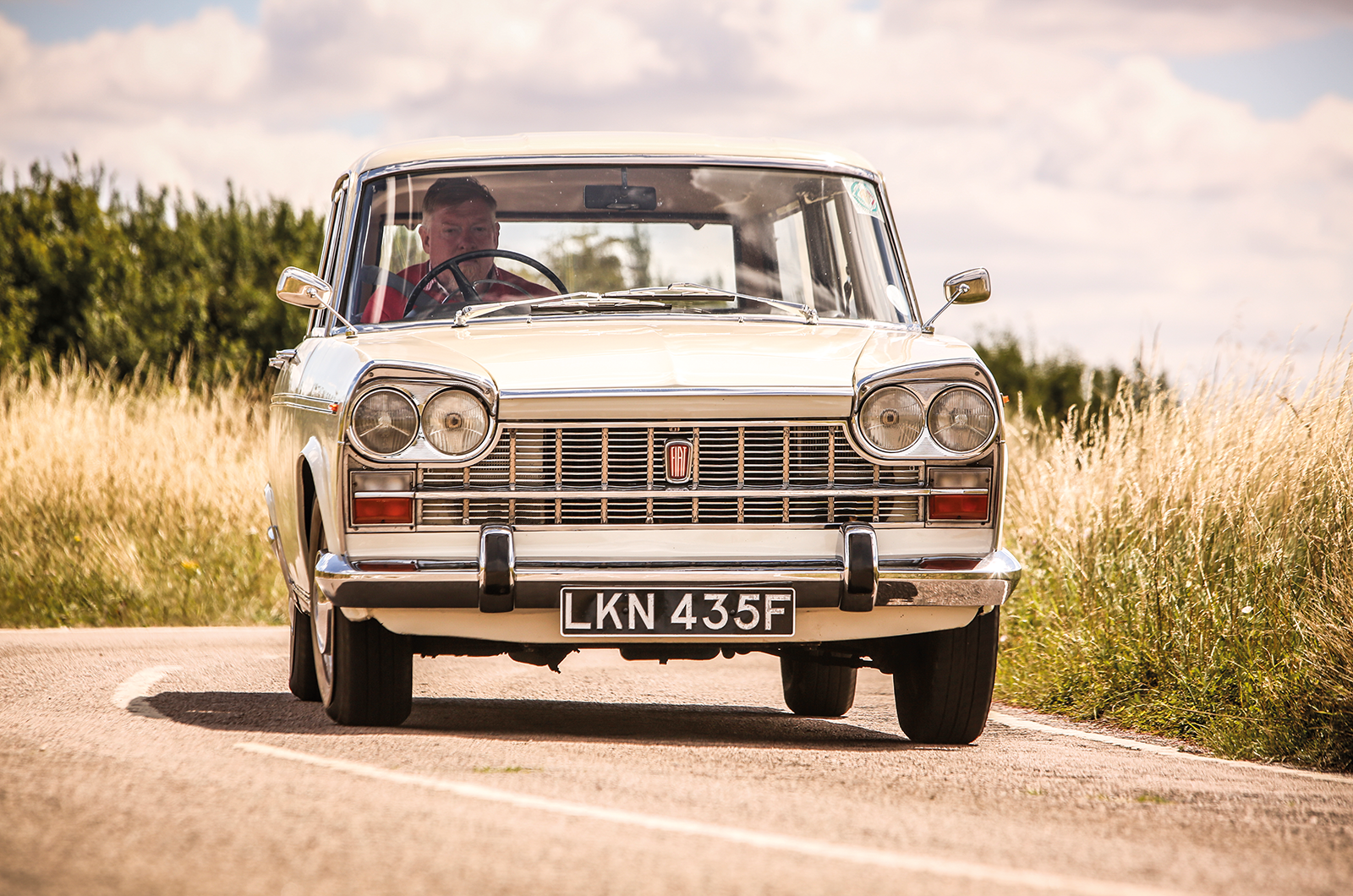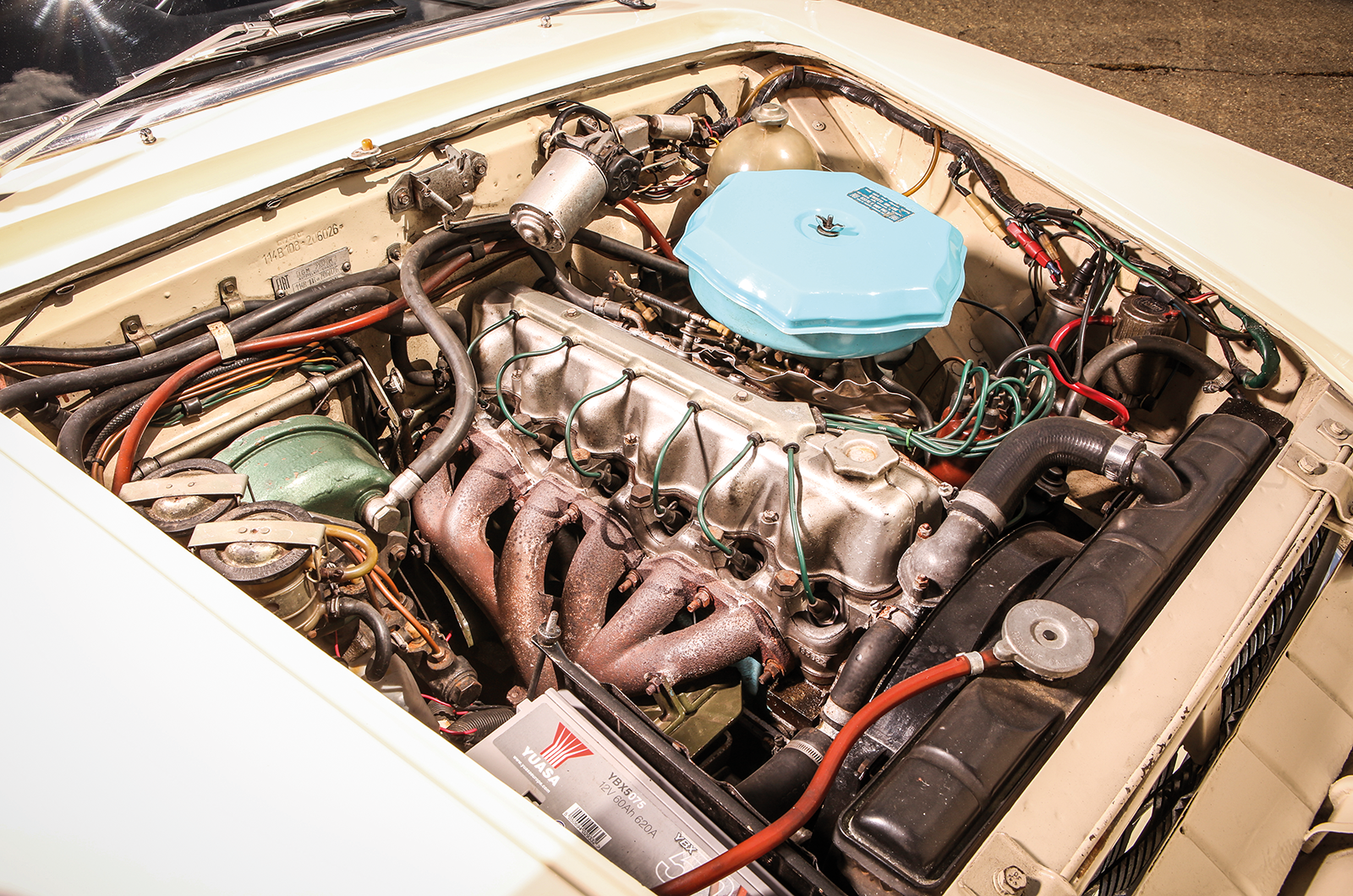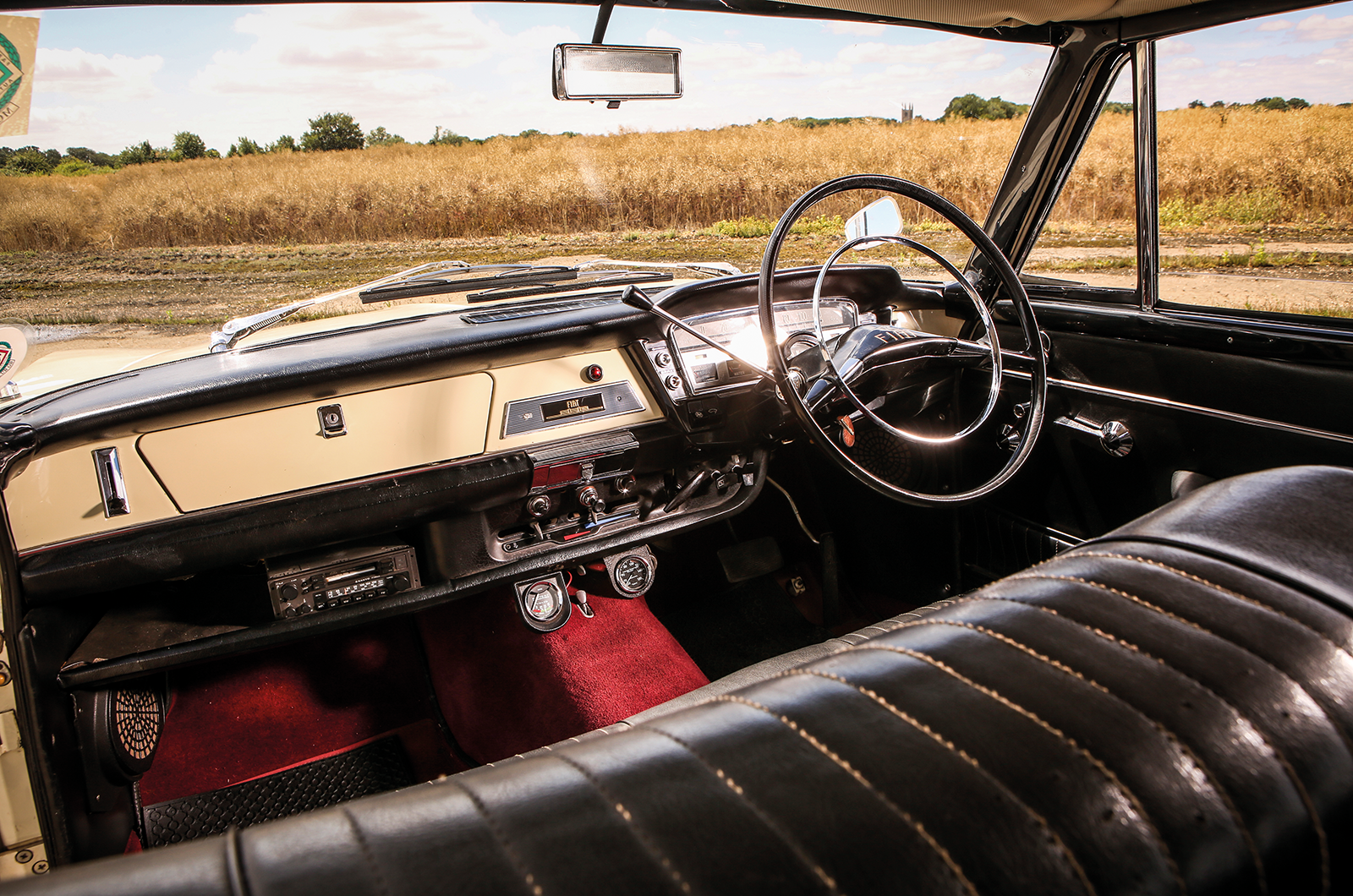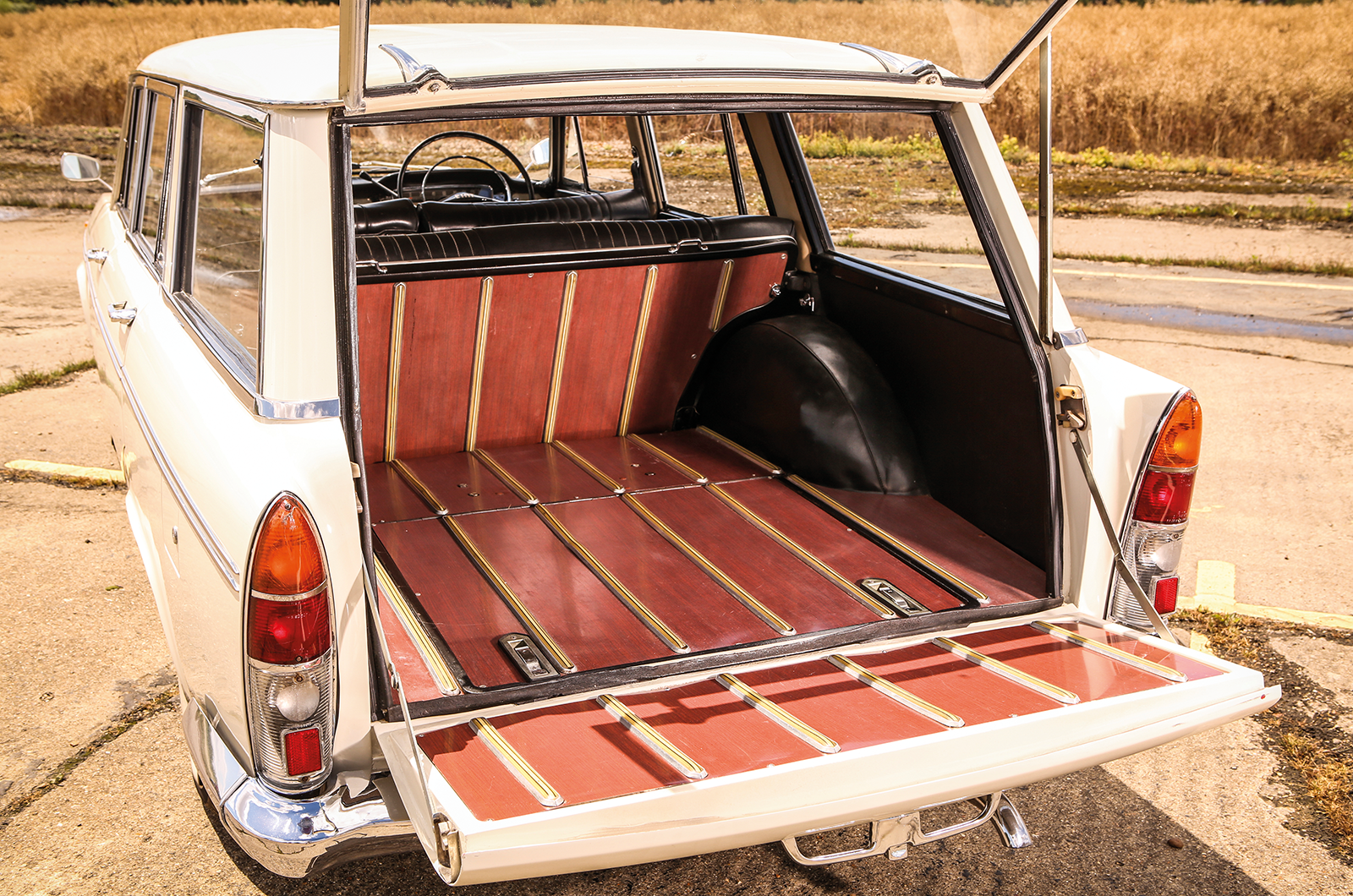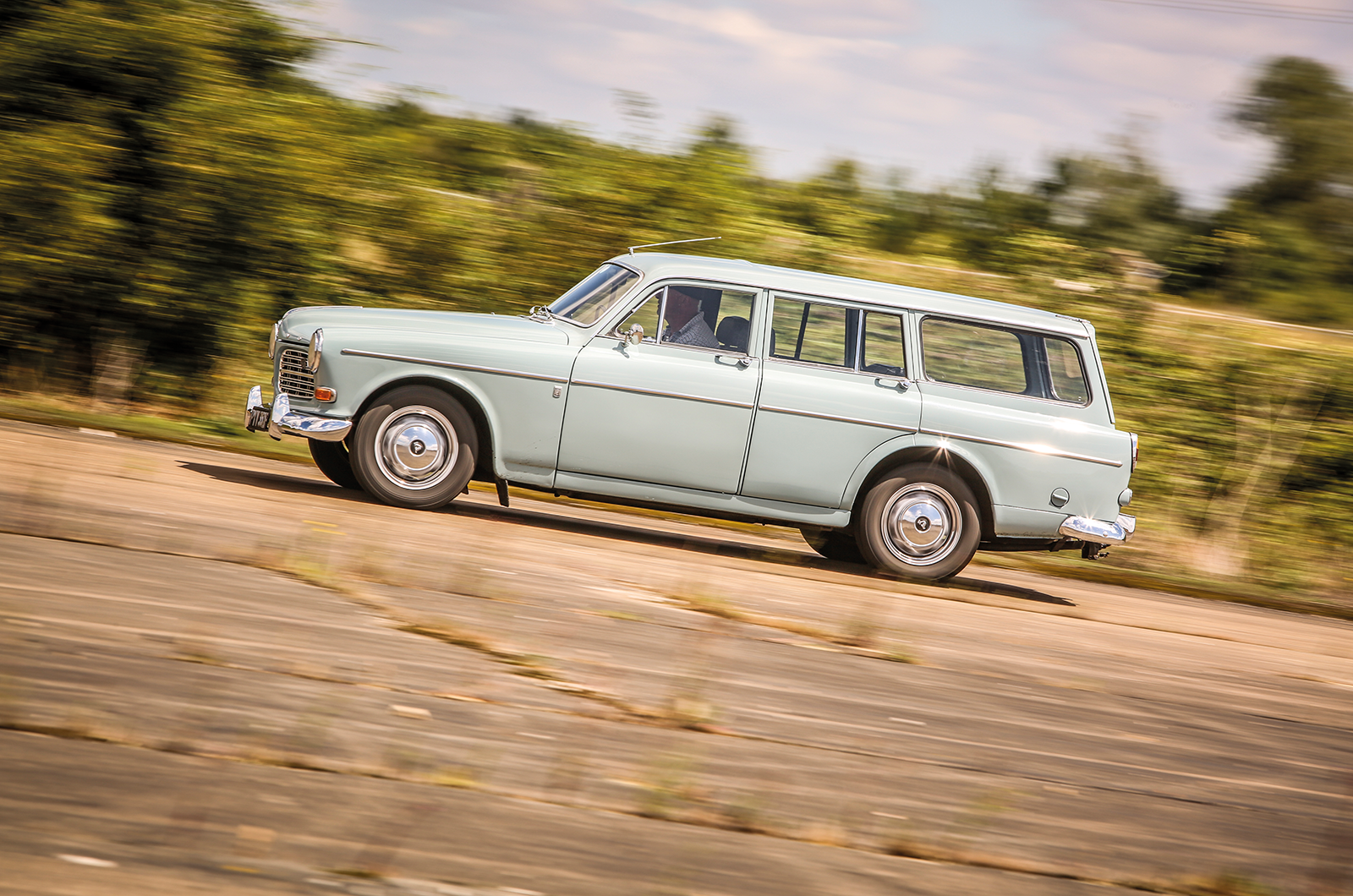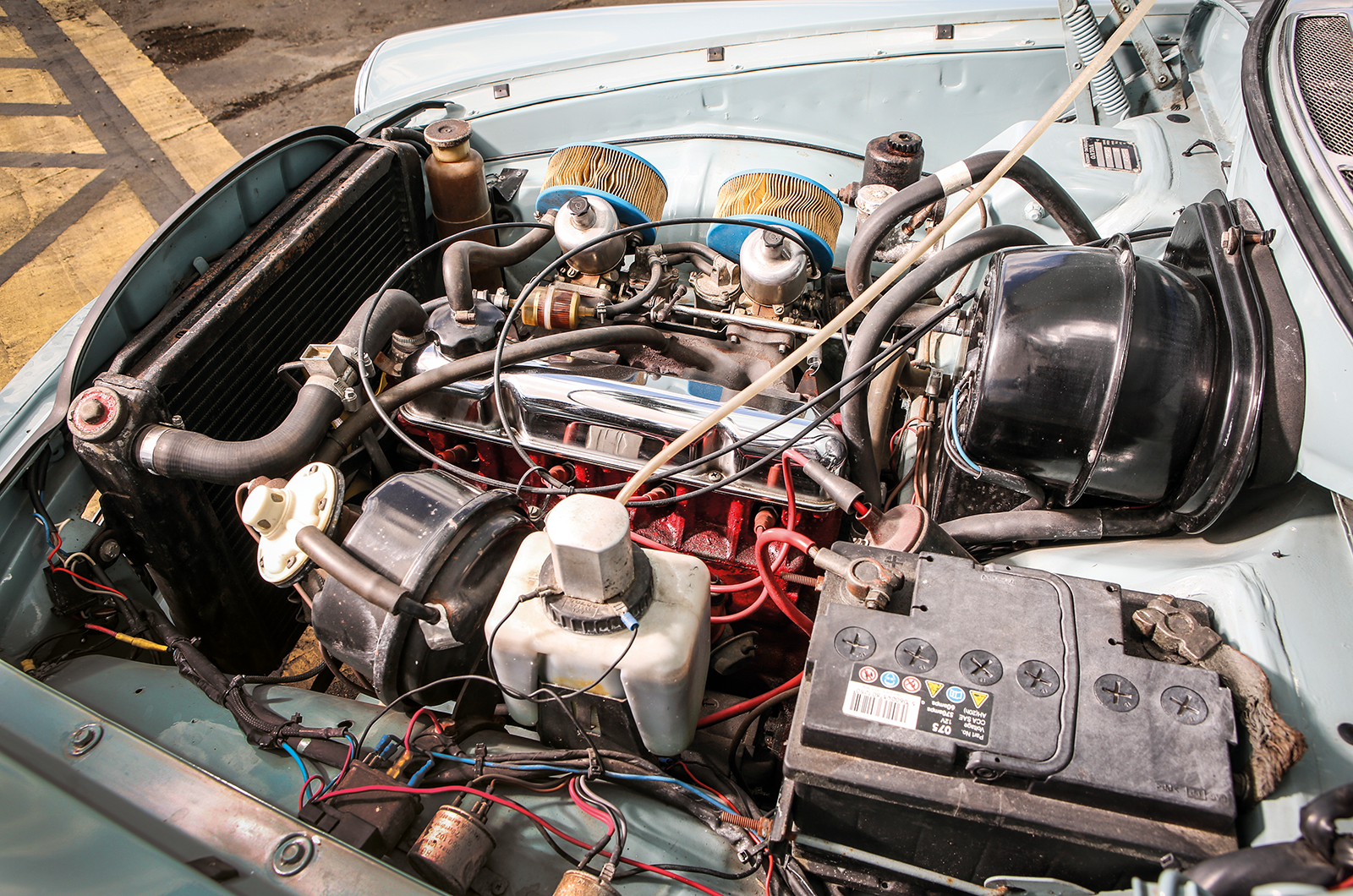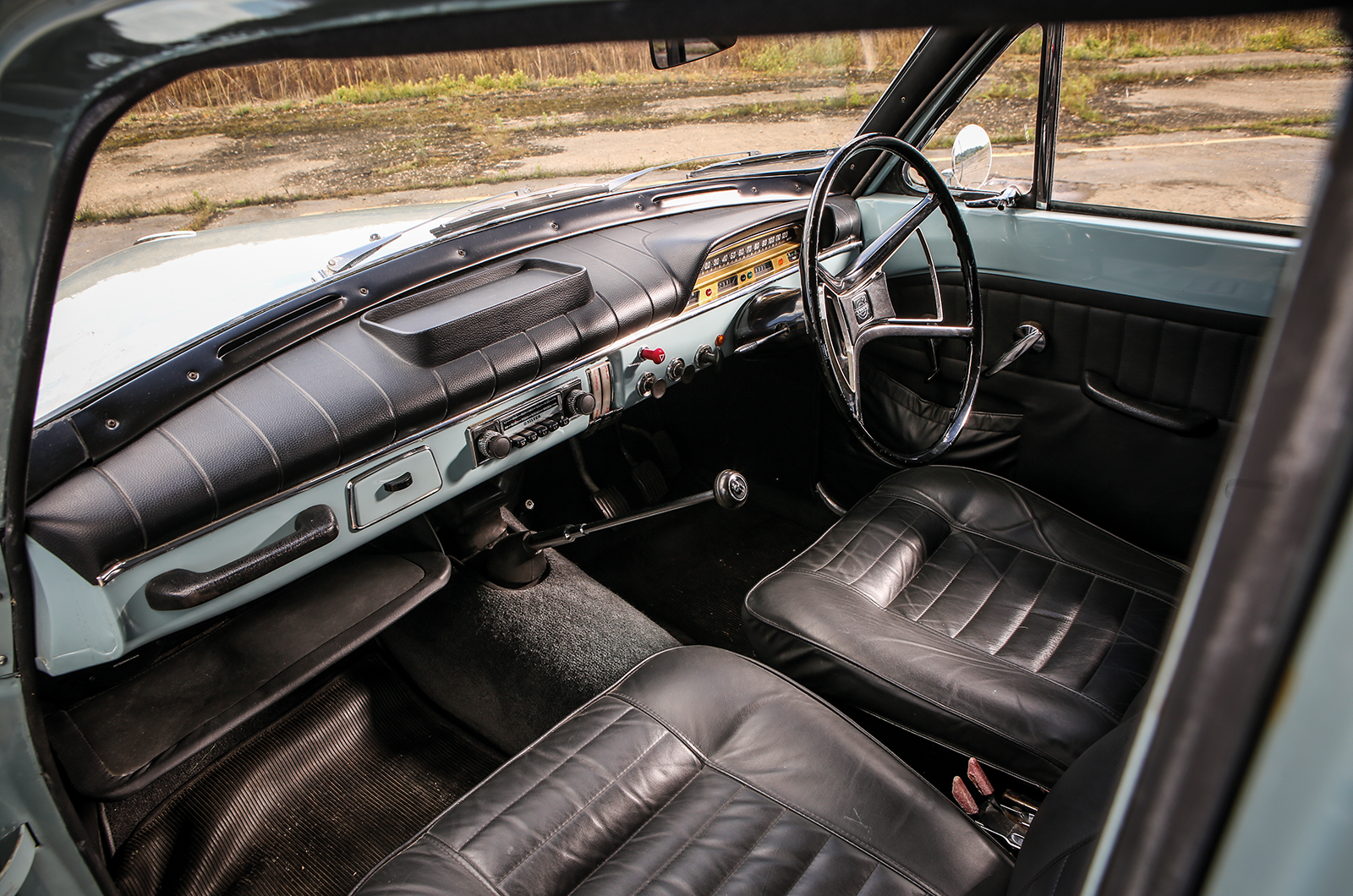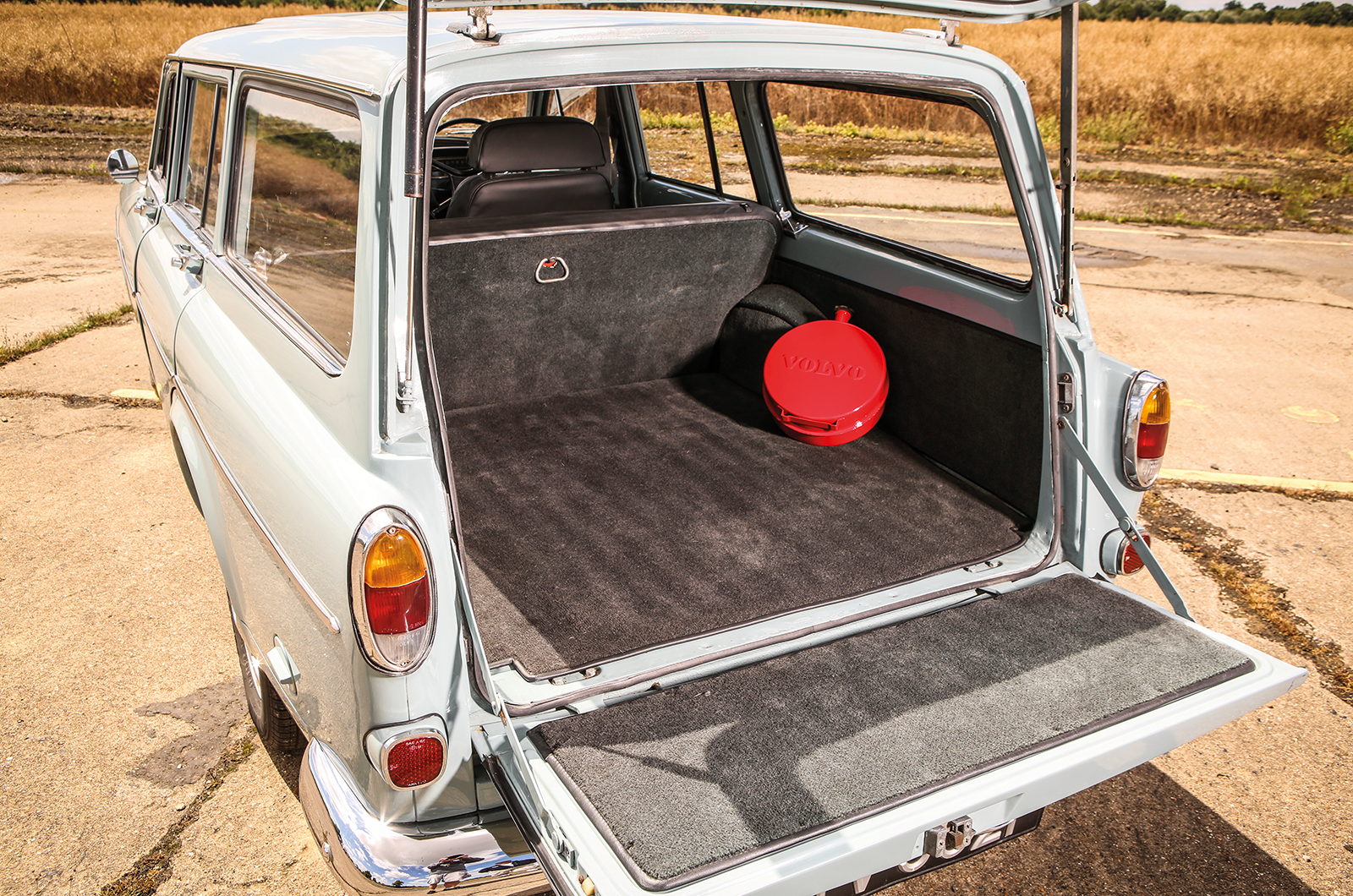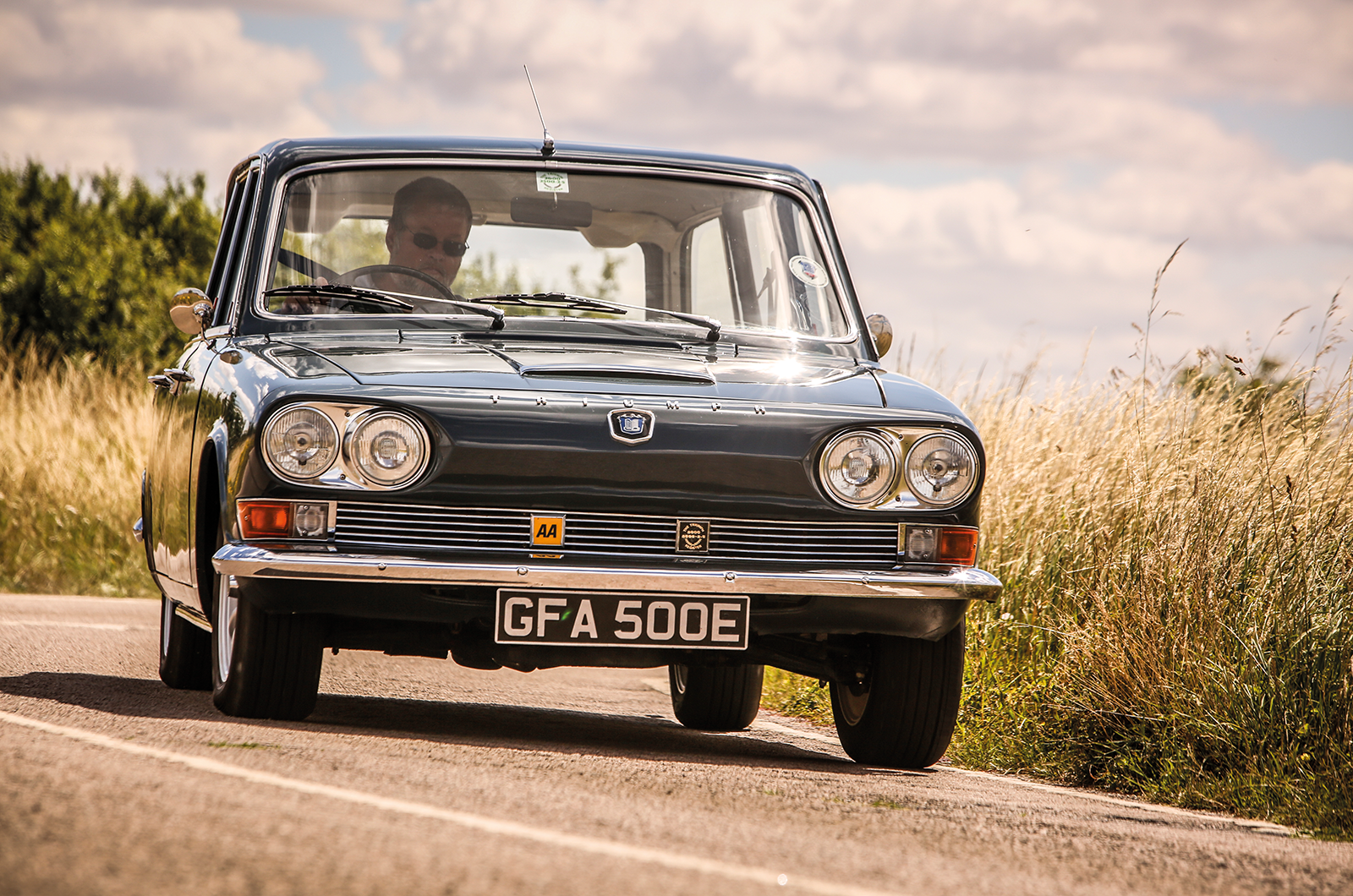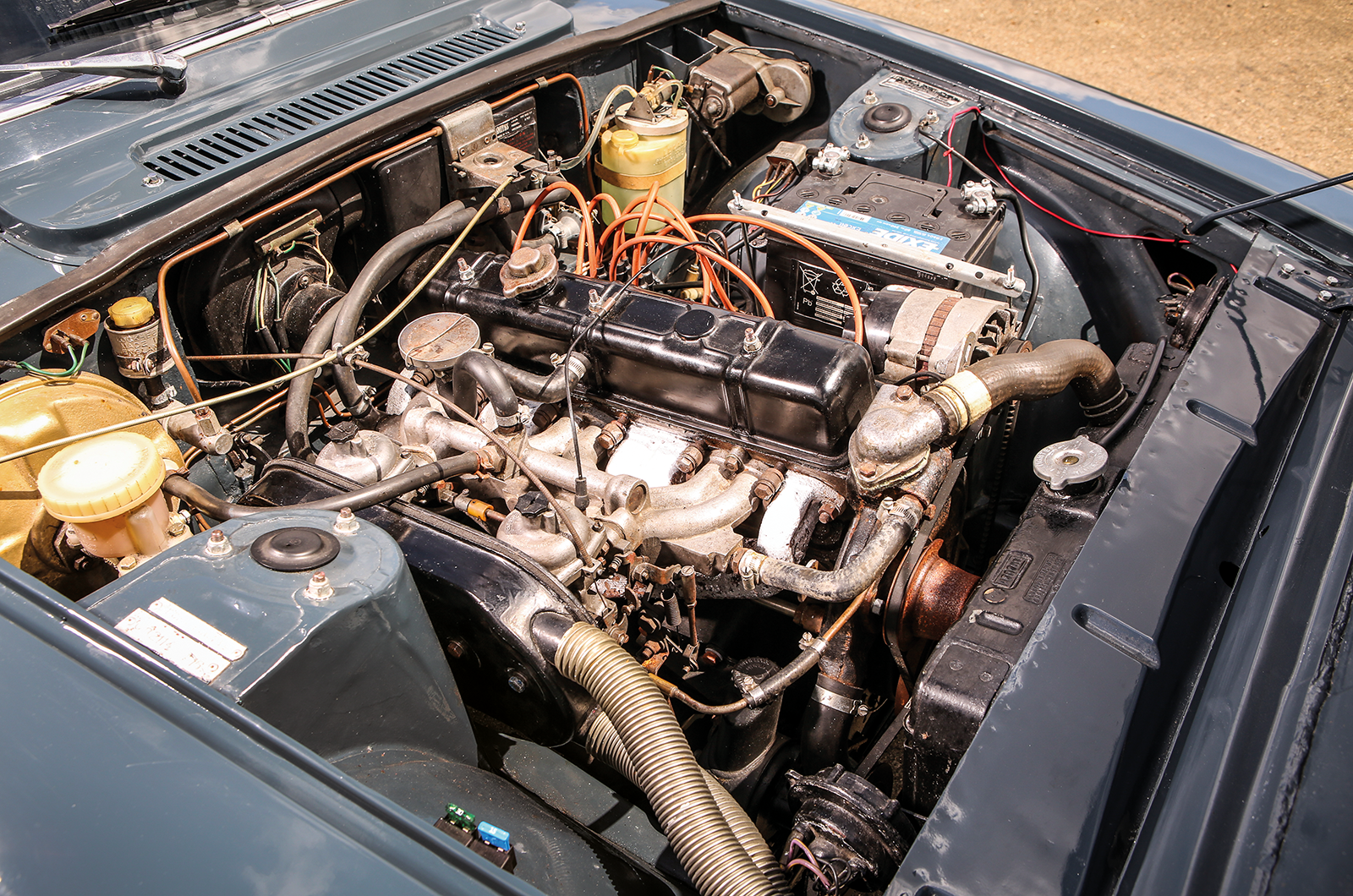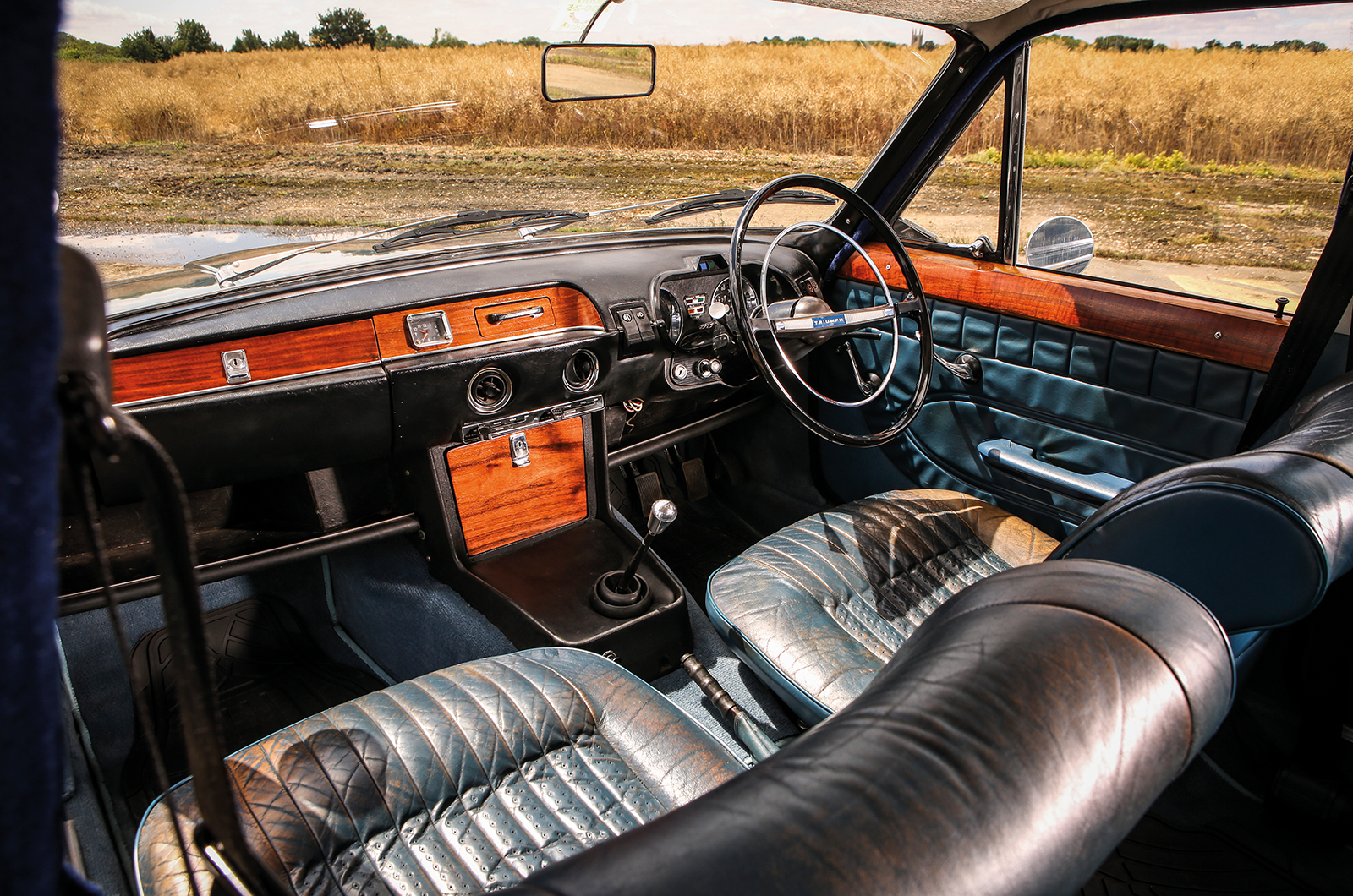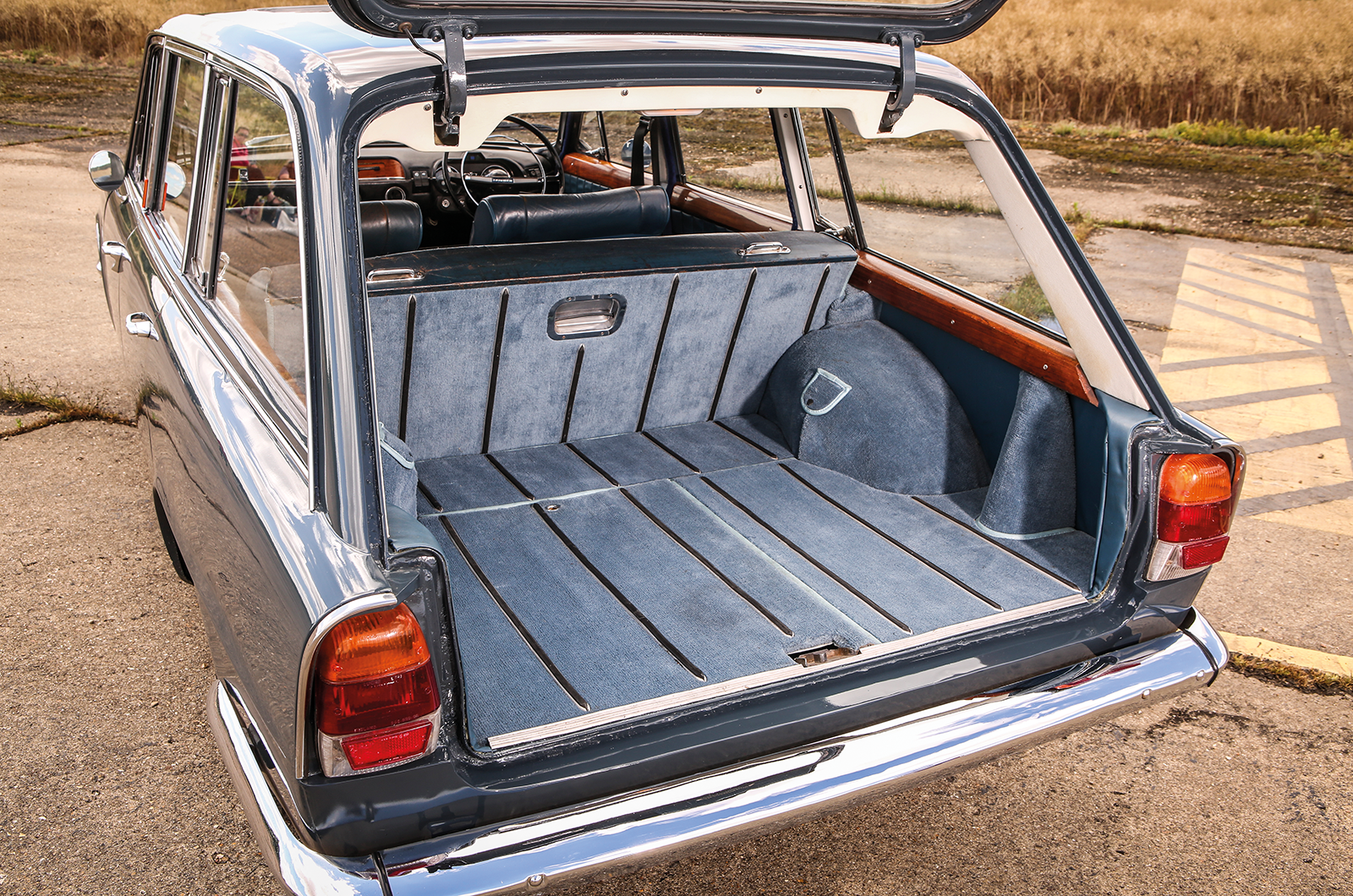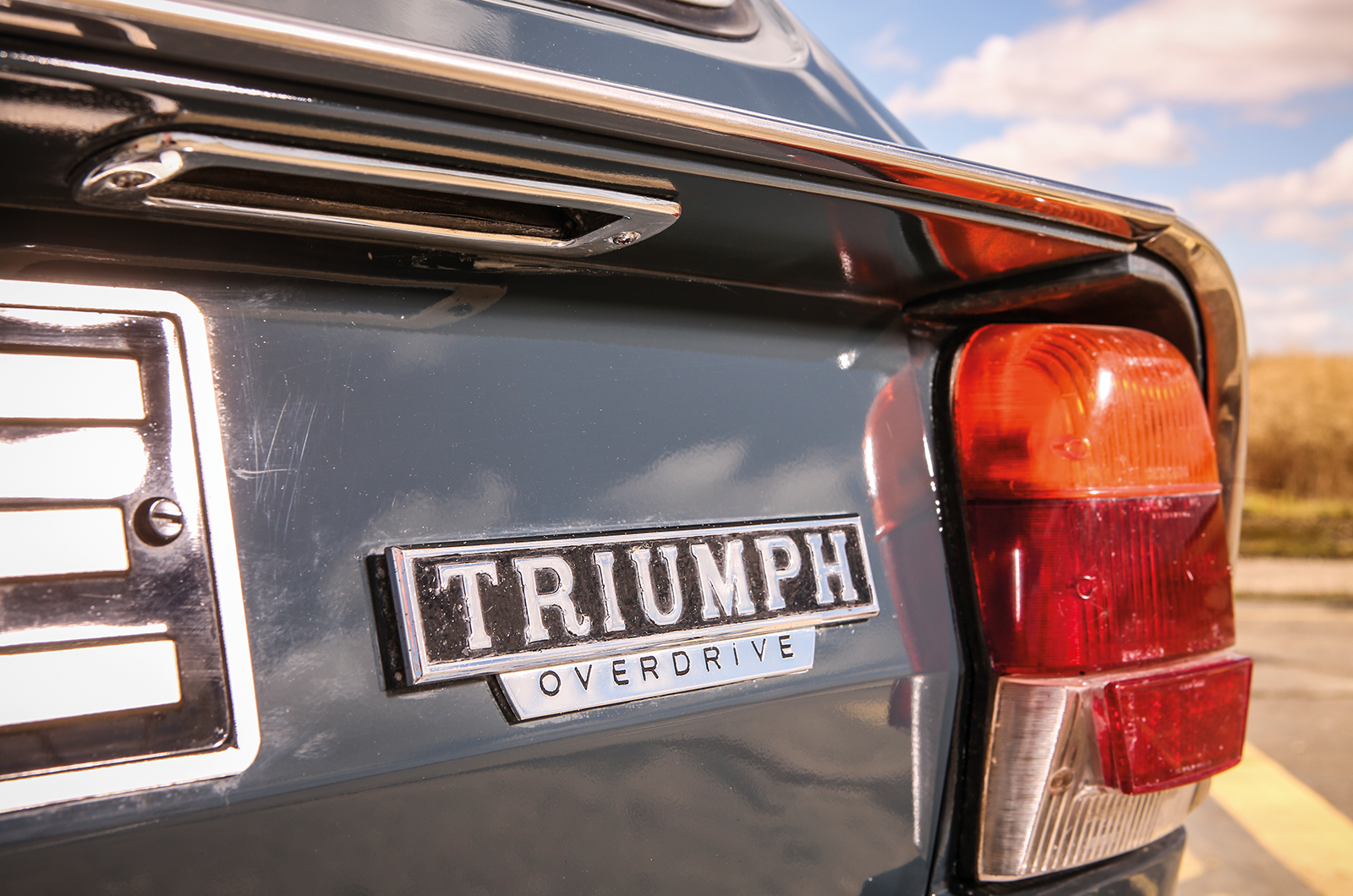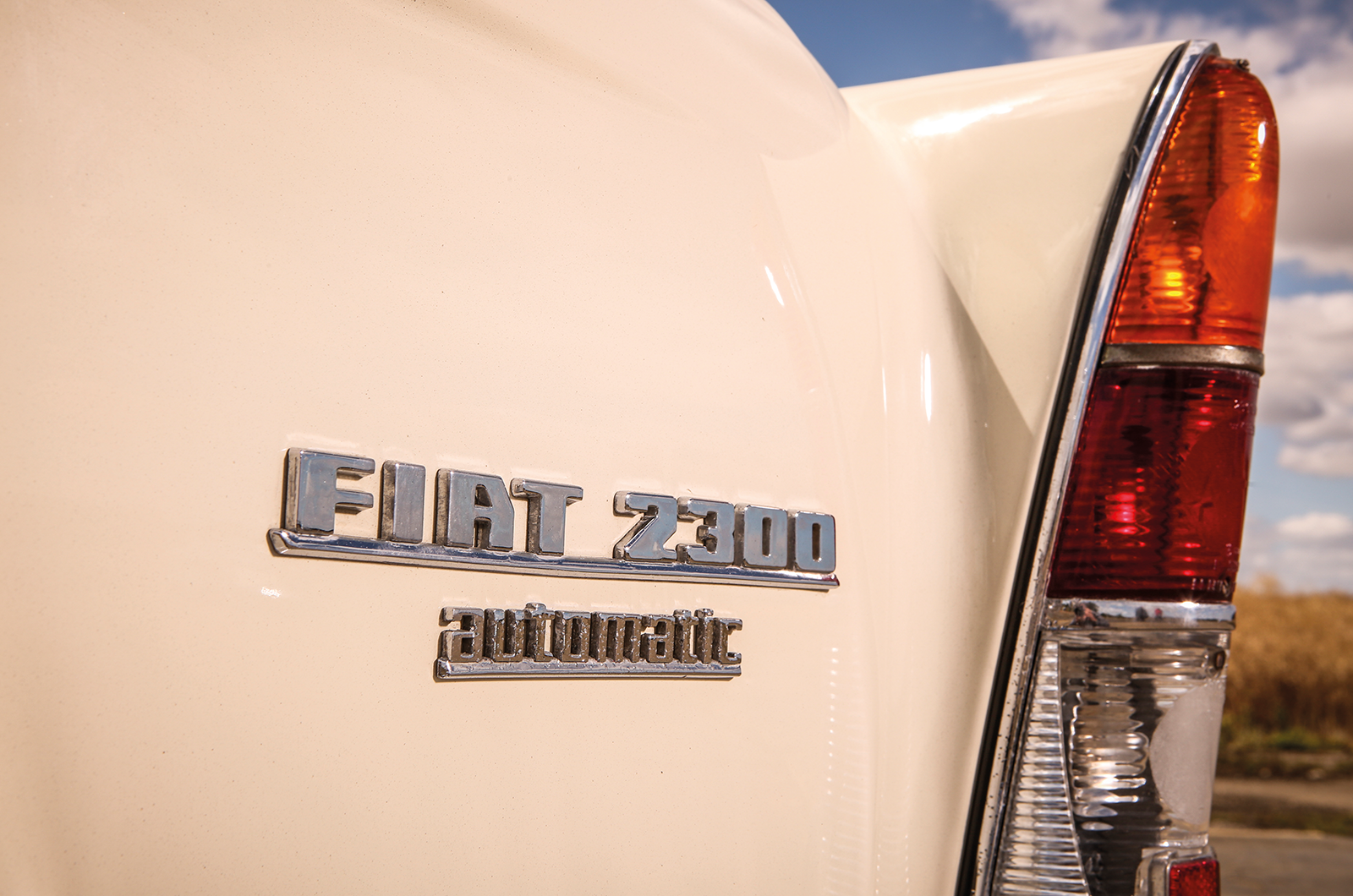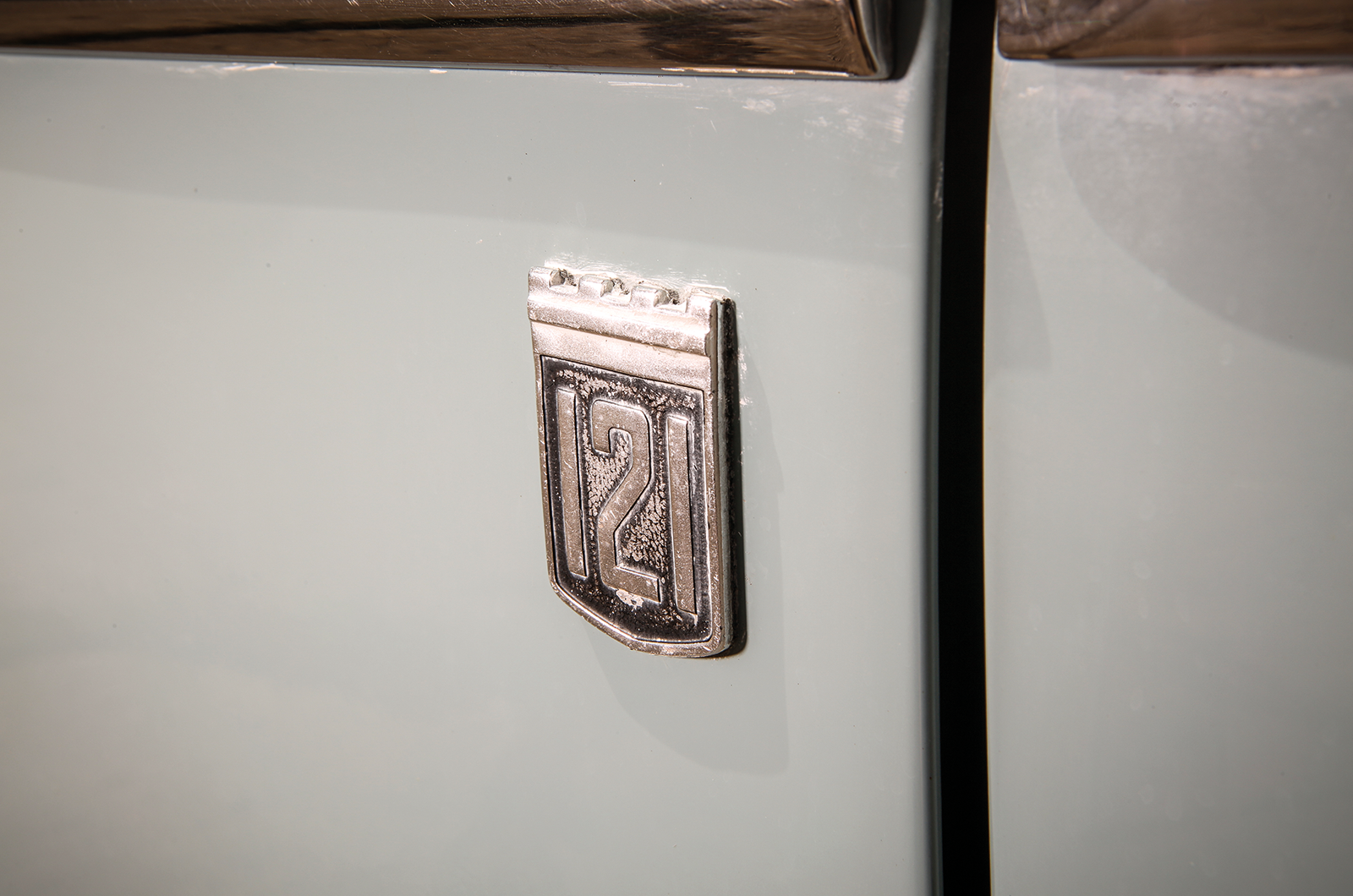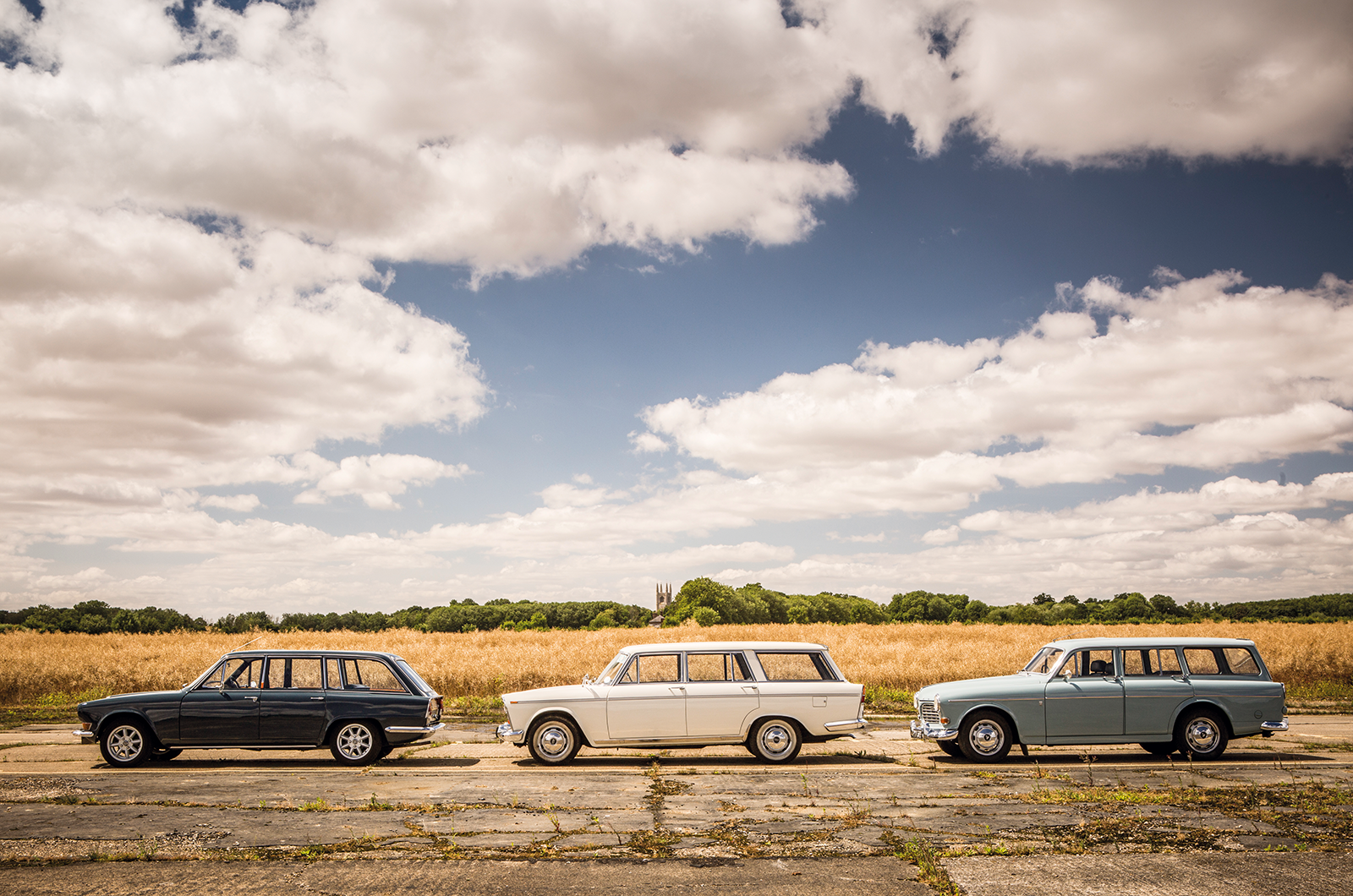The 2000’s suspension and steering provide an excellent balance between a GT and business transport, while there is space to convey two or three clients on the rear bench.
The ethos of the Triumph is best illustrated by the commercials for National Petrol, in which ‘getaway people’ would cruise along the beach and act in a swinging manner.
That’s the aspirational world of the 2000 Estate: while the reality may be a business trip to an Uxbridge building site, with the silky 2-litre straight-six a Triumph driver could envisage becoming a junior member of the jet set.
In the words of Leyland’s 1966 campaign, this was an ‘extraordinary combination of aesthetic and functional values’.
All three were great value when new, and each had – and still has – its own appeal
The Amazon was discontinued in ’69, having been supplemented by the 145 two years earlier, while the Triumph was replaced by the long-nosed Mk2 in the same year.
The Fiat ceased production in ’68 leaving no real successor, the 130 never being officially offered as a five-door.
Each member of this group would have represented tremendous value 50 years ago, and so individual are they in appeal that you’d really need to purchase all three.
On weekdays, the Triumph is ideal for speeding towards the next project designed to ruin the London skyline, saving the Volvo for weekend visits to gymkhanas, ignoring the occasional grumble from retired colonels about a lack of patriotism.
That leaves the Fiat, the perfect estate car for motoring along the Dorset coast on a summer evening, listening to Paul Mauriat performing Love is Blue.
I’ve craved the full-scale version ever since I first saw the Dinky model of the ‘2300 Station Wagon’, and after this encounter that ambition has only intensified.
Thanks to Amazon Cars; Alan Chatterton and the Triumph 2000 2500 2.5 Register; Flying Club Conington
Images: Tony Baker
FACTFILES
Fiat 2300 Familiare
- Sold/number built 1961-’68/185,000 (all)
- Construction steel monocoque
- Engine iron-block, alloy-head, ohv 2279cc ‘six’, twin-choke carburettor
- Max power 105bhp @ 5300rpm
- Max torque 123lb ft @ 2800rpm
- Transmission three-speed Borg-Warner automatic, driving rear wheels
- Suspension: front independent, by double wishbones, torsion bars rear live axle, semi-elliptic leaf springs; telescopic dampers, anti-roll bar f/r
- Steering worm and roller
- Brakes discs, with servo
- Length 14ft 7in (4485mm)
- Width 5ft 4in (1620mm)
- Height 4ft 10½in (1485mm)
- Wheelbase 8ft 8⅜in (2650mm)
- Weight 2965lb (1345kg)
- 0-60mph 12.5 secs
- Top speed 97mph
- Mpg 23.8
- Price new £1498
- Price now £15,000
Volvo 221
- Sold/number built 1962-’69/73,196
- Construction steel monocoque
- Engine all-iron, ohv 1778/1985cc ‘four’, with single/twin carburettors
- Max power 74bhp @ 4500rpm (1.8)
- Max torque 105lb ft @ 2300rpm (1.8)
- Transmission four-speed manual, driving rear wheels
- Suspension: front independent, by wishbones, anti-roll bar rear live axle, longitudinal trailing arms, torque arms, transverse link; coil springs, telescopic dampers f/r
- Steering cam and roller
- Brakes discs front, drums rear, with servo
- Length 14ft 9in (4490mm)
- Width 5ft 4in (1620mm)
- Height 4ft 11in (1505mm)
- Wheelbase 8ft 6½in (2604mm)
- Weight 2799lb (1270kg)
- 0-60mph 16 secs
- Top speed 88mph
- Mpg 27
- Price new £1421
- Price now £10,000
Triumph 2000 Estate
- Sold/number built 1965-’69/7032
- Construction steel monocoque
- Engine all-iron, ohv 1998cc ‘six’, twin Zenith-Stromberg carburettors
- Max power 90bhp @ 5000rpm
- Max torque 117lb ft @ 2900rpm
- Transmission four-speed manual with overdrive, driving rear wheels
- Suspension independent, at front by MacPherson struts rear semi-trailing arms, coil springs, telescopic dampers
- Steering rack and pinion
- Brakes discs front, drums rear, with servo
- Length 14ft 7in (4445mm)
- Width 5ft 5in (1651mm)
- Height 4ft 8in (1422mm)
- Wheelbase 8ft 10in (2692mm)
- Weight 2687lb (1219kg)
- 0-60mph 15 secs
- Top speed 93mph
- Mpg 24
- Price new £1465
- Price now £7000
READ MORE
One man’s mission to restore a Riley One Point Five
The biggest classic car birthdays in 2020
9 British classics built for export
Andrew Roberts
Andrew is a long-time contributor to Classic & Sports Car
